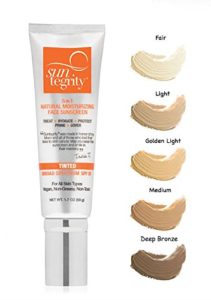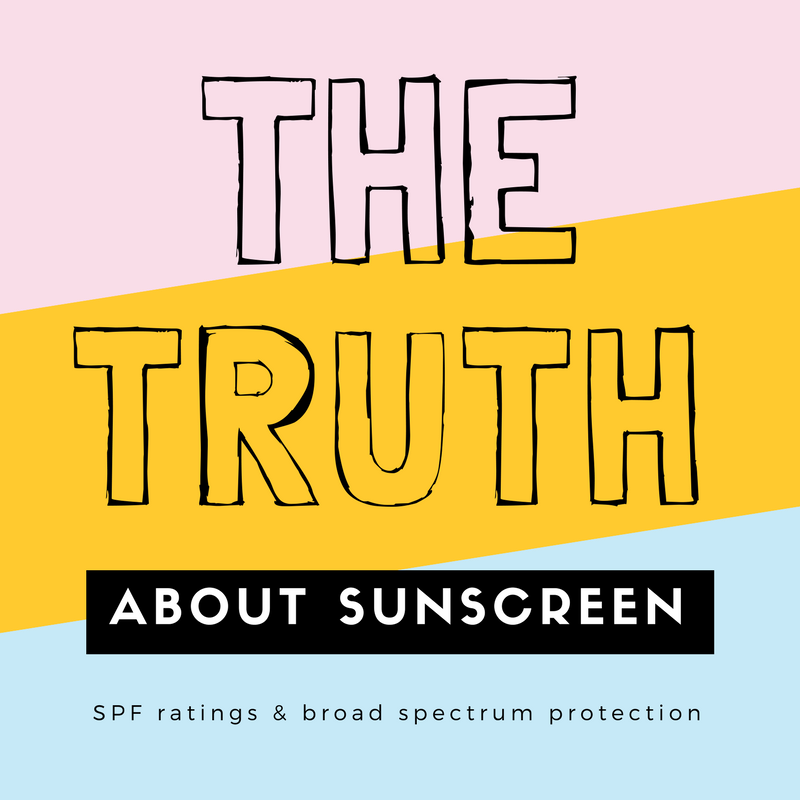 It’s no secret that the sun can wreak havoc on the skin. But what if your go-to skin protection tool—SUNSCREEN—isn’t helping as much as you thought it was? Thing is, when it comes to problems caused by the sun (skin cancer, immune suppression, DNA damage, accelerated aging) relying on SPF ratings alone is a bad idea.
It’s no secret that the sun can wreak havoc on the skin. But what if your go-to skin protection tool—SUNSCREEN—isn’t helping as much as you thought it was? Thing is, when it comes to problems caused by the sun (skin cancer, immune suppression, DNA damage, accelerated aging) relying on SPF ratings alone is a bad idea.
Here’s why: A higher SPF doesn’t necessarily mean more protection.
I’ll show you how UVA and UVB rays are different, and how that affects your skin and the aging process. I’ll also break down the reason why SPF ratings are inadequate. Finally, I’ll share with you some awesome natural sunscreens that offer safe, stable, broad-spectrum protection. You know, that thing you came here to find.
The Difference between UVB and UVA Rays (and why that difference matters)
Not all rays from the sun affect your skin and body in the same way. They’re different, and interact with you and your sunscreen differently.
UVB are the rays which cause sunburns and are thought to be the primary UV source of skin cancer. Remember “UVB: B is for Burning.” Some UVB exposure is healthy for humans, as it allows for synthesis of Vitamin D.
UVA, on the other hand, is the radiation which accelerates the aging process and is responsible for the temporary tanning effect. Remember, “UVA: A is for Aging.” And here’s the kicker: approximately 95% of the UV rays at the earth’s surface are UVA. And…wait for it…UVA penetrates deeper into the skin than UVB rays.
(Dangerous UVC radiation exists, but is almost completely absorbed by the ozone layer before reaching the earth’s surface. So there’s no need to worry about it when you’re thinking about sunscreens.)
The Problem with SPF Ratings
SPF, also known as the Sun Protection Factor, only measures the protection a sunscreen will give you from UVB rays. SPF does not account for UVA protection.
UVA protection isn’t even rated in the United States. That’s odd for something so important, right? A high SPF sunscreen may protect you from the Rays that Burn (UVB), but that doesn’t mean it’ll do much to protect you from the Rays that Age (UVA).
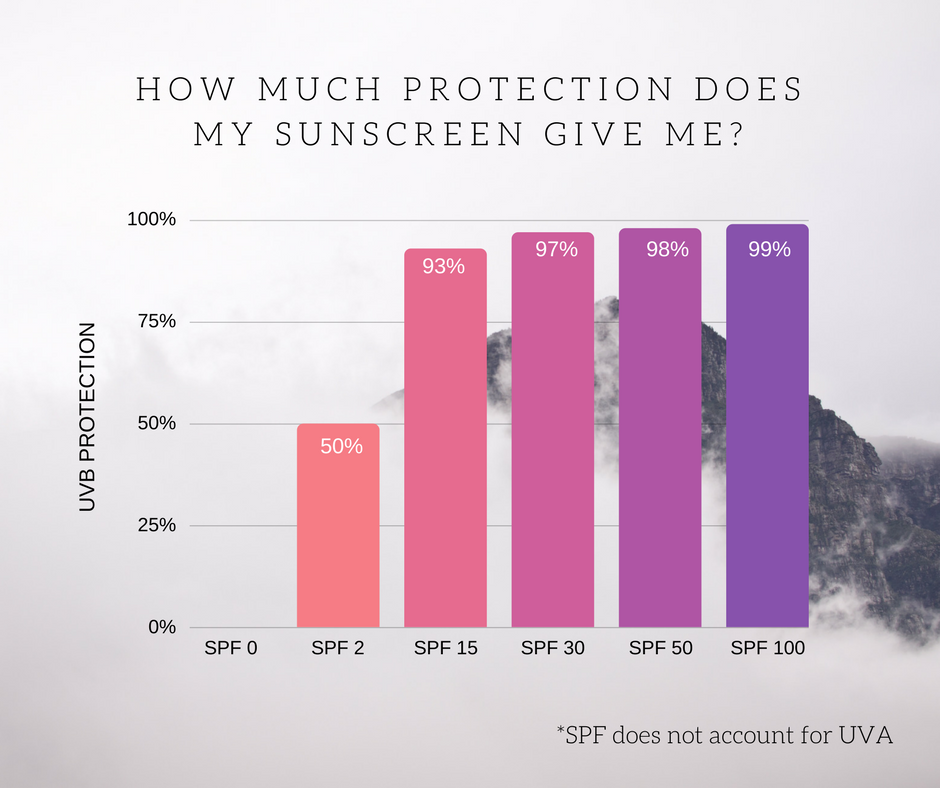 Do you see this chart? The incremental UVB protection provided by sunscreens above SPF 30 ain’t much. In fact, it may come at a cost—the Environmental Working Group warns that sunscreens with high SPF may improve UVB protection at the expense of UVA protection. More UVB protection leads to less UVA protection. Even the FDA stated in 2007 that any SPF greater than 50 is “inherently misleading.”
Do you see this chart? The incremental UVB protection provided by sunscreens above SPF 30 ain’t much. In fact, it may come at a cost—the Environmental Working Group warns that sunscreens with high SPF may improve UVB protection at the expense of UVA protection. More UVB protection leads to less UVA protection. Even the FDA stated in 2007 that any SPF greater than 50 is “inherently misleading.”
Yikes.
As a point of comparison, a dry, white t-shirt provides the protection of approximately SPF 7. Please tell me I’m not the only one who finds that shocking.
Anyways, what it comes down to is this: You need protection from UVB and UVA rays.
When it comes to anti-aging power, UVA protection is crucial. The sunscreens which provide the most complete UVA protection also appear to be the best at suppressing free radical formation (Wang 2012). And you want to suppress free radical formation.
Nearly all sunscreens on the shelves today comply with the FDA’s latest broad spectrum guidelines. Still, these guidelines are lax compared* to other developed nations. Many US sunscreens–about 50%–don’t comply with the more sophisticated EU standards.
There are ways to measure UVA protection, but we just don’t use them here in the United States. Elsewhere, the Japanese-developed persistent pigment darkening method (PPD) measures UVA protection.
So Which Sunscreen Should I Use?
Zinc Oxide, Avobenzone, and Mexoryl SX are some of the best sunscreen agents available. Personally, I prefer zinc oxide. It doesn’t come with any of the nasty side effects other popular sunscreen agents sometimes have. And the new generation of zinc oxide sunscreens don’t leave a ghostly white glow on skin.
Here are some of my favorite natural sunscreens:
- Andalou Naturals | Oil Control Beauty Balm SPF30, $17. Use alone or under makeup. Balances oily skin, with broad-spectrum sun protection. Read a review or buy it here.
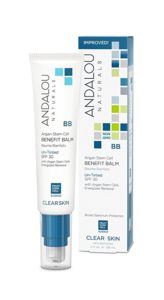
- True Botanicals | Everyday Sheer Coverage SPF20, $40. Sheer matte finish and powerful antioxidant protection. True Botanicals is the leader in natural anti-aging skincare. Read a review or buy it here.
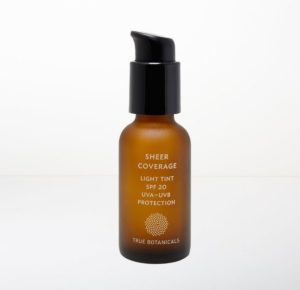
- Ursa Major | Daily Defense Lotion SPF18, $54. Non-greasy and delightfully lightweight. Absolutely amazing under makeup: it won’t settle into fine lines or allow makeup to slide around. Filled with beneficial anti-aging ingredients. I’m wearing it as I type out this post! Read a review or purchase it here.
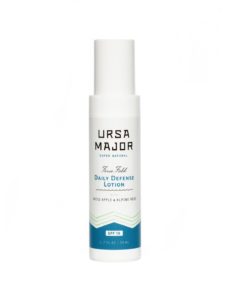
- Juice Beauty | SPF30 Mineral Moisturizer Sheer, $29. Works well under makeup and doesn’t feel heavy on skin. For all skin types. Find it here.
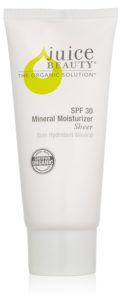
- MyChelle | Sun Shield SPF28 Unscented, $16. Lightweight with a matte finish. Great under makeup, for kids, or for men. This level of quality at this price is hard to beat. Read a review or buy it here.
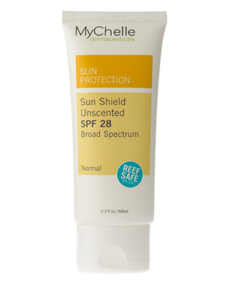
- Suntegrity | 5-in-1 Tinted Natural Moisturizing Face Sunscreen, $45. Lightweight and blendable. Slightly radiant finish. Not what you’d expect from zinc oxide. And the tint is *just enough* coverage to make skin look exceptionally gorgeous. Read a review or buy it here.
